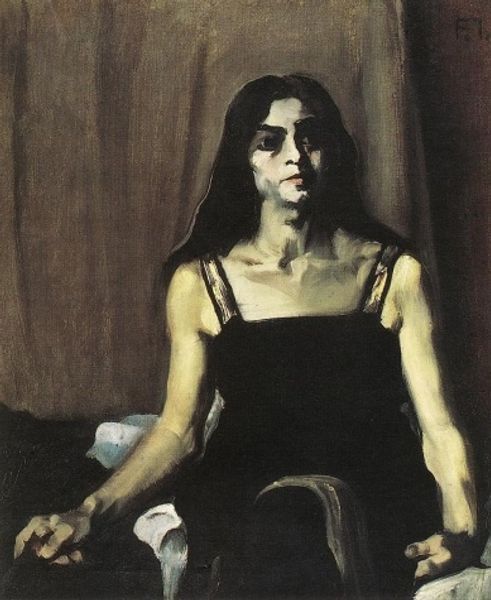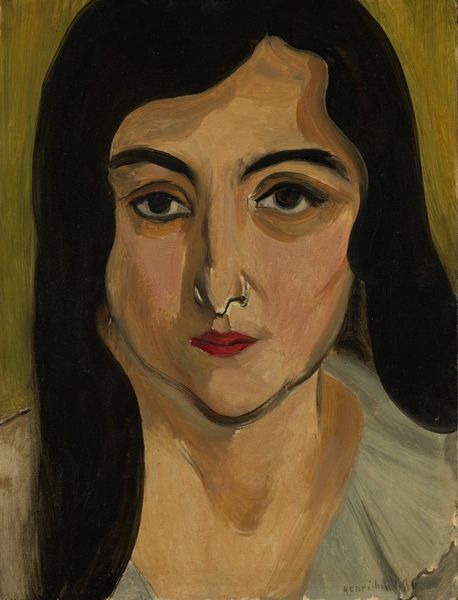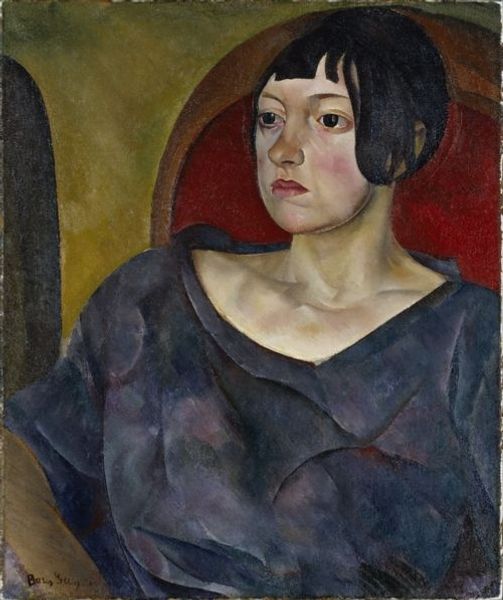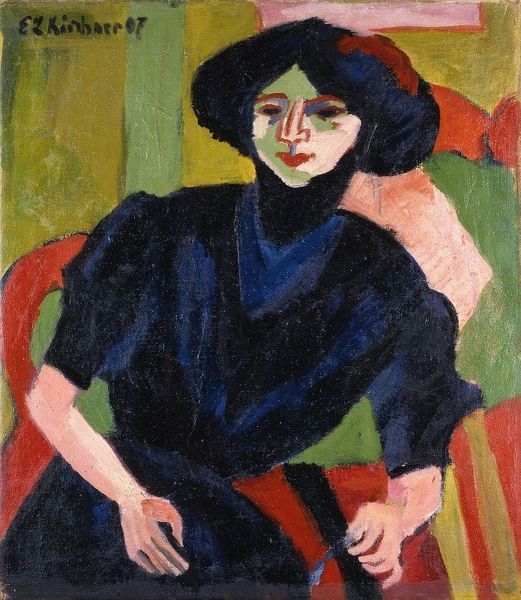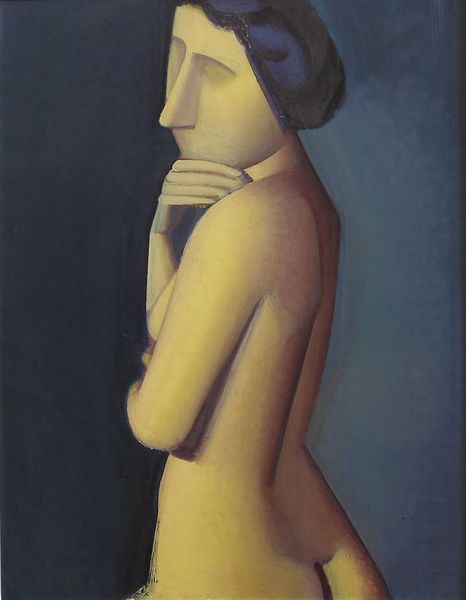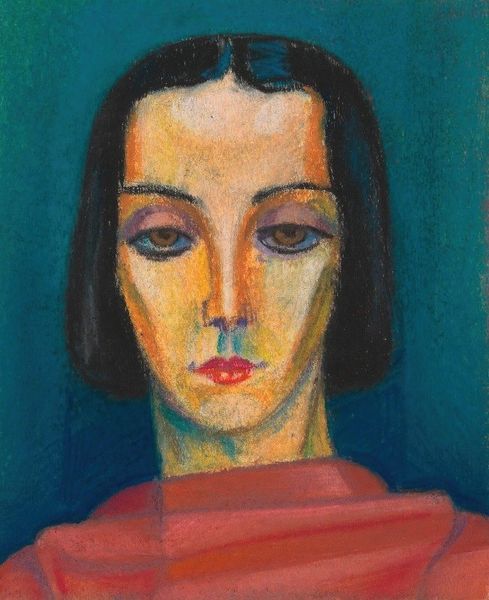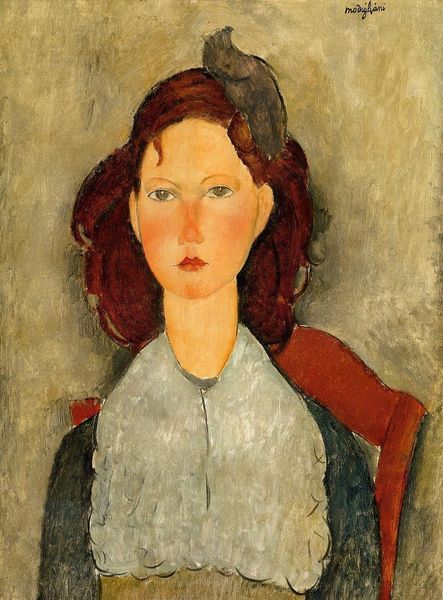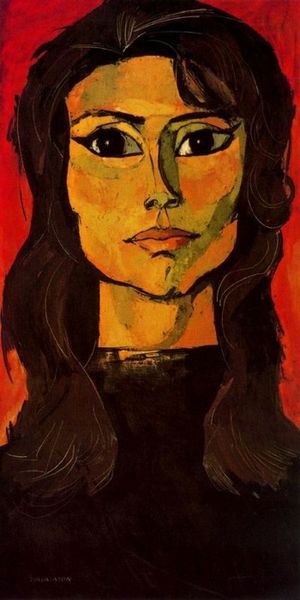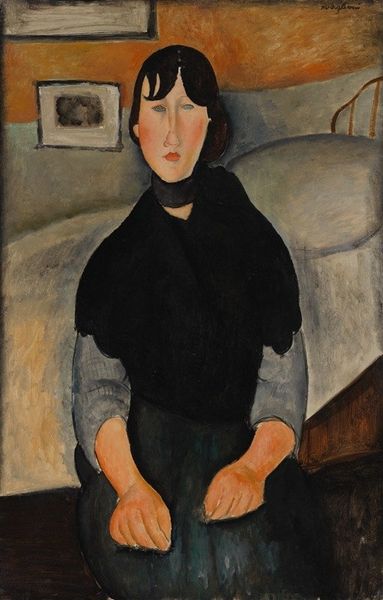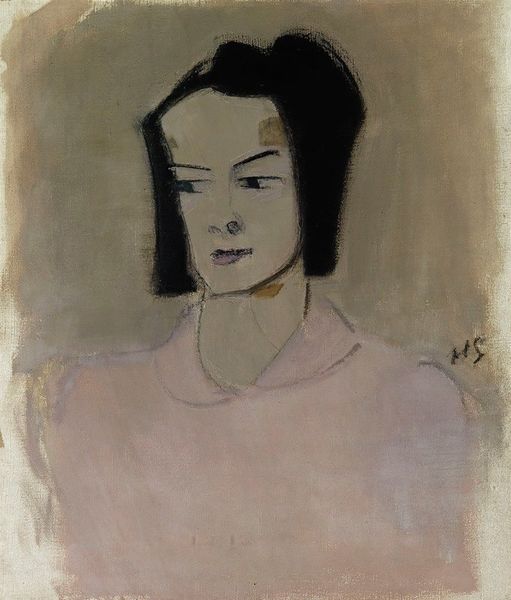
painting, oil-paint
#
portrait
#
face
#
painting
#
oil-paint
#
portrait subject
#
figuration
#
portrait reference
#
portrait head and shoulder
#
animal drawing portrait
#
portrait drawing
#
facial portrait
#
lady
#
portrait art
#
female-portraits
#
modernism
#
fine art portrait
#
realism
#
celebrity portrait
#
digital portrait
Dimensions: 38.1 x 47 cm
Copyright: Lucian Freud,Fair Use
Curator: Lucian Freud's "Girl in a Dark Jacket," painted in 1947, immediately strikes me as intense. What are your initial thoughts? Editor: Her gaze feels so direct, almost confrontational. It’s unnerving but also captivating. I immediately want to know her story. Curator: Freud's application of oil paint is remarkable here. Notice the almost sculptural quality he achieves in rendering the hair and the sharp edges of the jacket lapel. There’s a palpable tension between the flat, grey background and the highly rendered figure. What could that materiality tell us? Editor: Considering the post-war context, there's a certain austerity, a sense of rationing in the palette itself. The dark jacket could be seen as a signifier of a specific social class or perhaps even a uniform, stripping the girl of individuality. What about her age? How might you read the portrayal of young women during that era? Curator: I see the meticulous brushwork as demanding attention to labor. The labor to represent and, possibly, to categorize and place this young woman within a very particular social structure. Also consider that Freud comes from a long family lineage of artists and intellectuals—that's significant too! Editor: Absolutely. And thinking about representation, there’s also something unsettling in the way her eyes are rendered – large, almost childlike, but also knowing. The intersection of her youth and the encroaching darkness speaks volumes about the precariousness of girlhood in a world just emerging from war. We see women entering the workforce in unprecedented numbers; how did Freud react to this shift? Curator: He was keen to depict the figure with disarming frankness and not sentimentalize her situation; the slight upward tilt of her head—that refusal to avert her eyes! It’s fascinating when you think about what Freud consciously decides to render. Editor: Agreed, but her individual story feels inseparable from the collective experience of women at that time, forced into new roles. Curator: Seeing how Freud handled and deployed the materiality here, understanding the act of representing as its own specific labor opens this painting for a much wider appreciation than as just a 'portrait' of an anonymous girl. Editor: For me, it’s about uncovering the threads of history woven into the very fabric of the painting. Examining her in light of the time tells a richer story.


